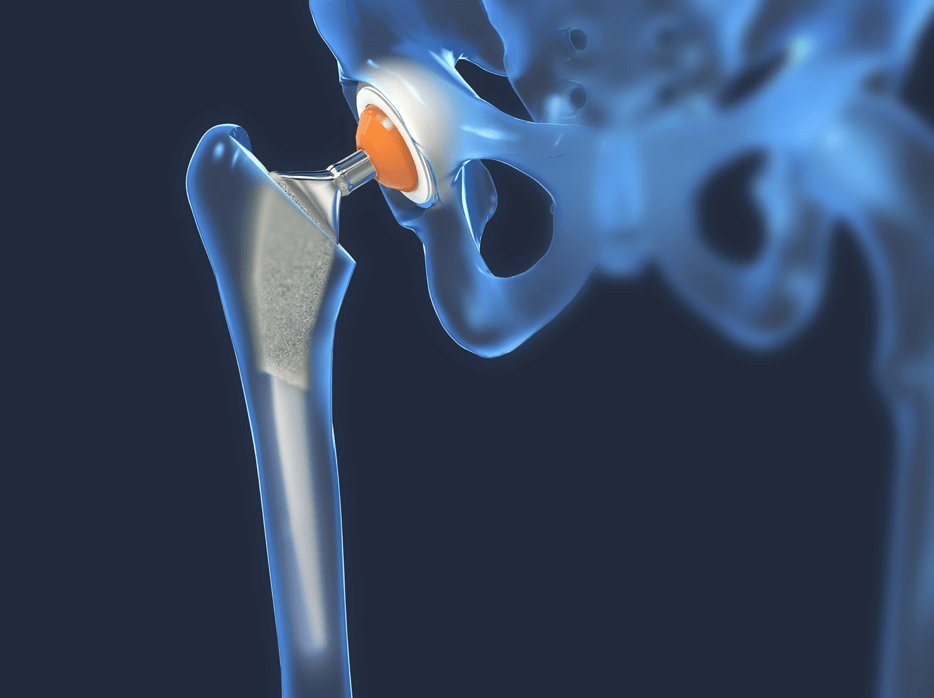
Total joint replacement is a surgical procedure where parts of an arthritic or damaged joint are removed and replaced with a metal, plastic or ceramic device called a prosthesis or implant. The prosthesis is designed to reproduce the shape and motion of the normal joint.
A joint is an area in the body where two or more bones join together to allow motion. The surfaces of the bones are covered with cartilage to form a normal smooth gliding joint. Over time this cartilage can break down, leading to bone-on-bone friction which can cause inflammation and pain.
The most common conditions that lead to joint replacement surgery are osteoarthritis and rheumatoid arthritis. There are, however, other causes of joint pain that may also lead to joint replacement including hereditary disorders, developmental problems, and trauma. Joint replacement is performed only after other conservative treatments have failed such as medications, physical therapy, and injections.
What Happens During Joint Replacement Surgery
Hip and knee replacement are two of the most commonly performed operations in orthopedic surgery. Both procedures are very successful at eliminating pain, correcting deformity and improving patient mobility so patients can regain quality of life and get back to the activities they enjoy.
During hip replacement, the damaged ball of the hip ball and socket joint is removed and replaced with a metal or ceramic ball that attaches to a stem that fits into the femur. The prosthesis is usually coated with a special material into which the bone will grow over time. In some instances, however, the prosthesis is cemented into the bone. The socket portion of the ball and socket joint is also replaced with a metal cup that is placed into the pelvis. A plastic liner is then snapped into the metal cup and rotates with the new ball on the end of the femoral stem. The prostheses and implants come in a variety of shapes and sizes that can be tailored to the individual.
During total knee replacement surgery, a thin amount of bone along the surface of the joint is removed from the end of the femur or thigh bone, the top of the tibia or leg bone, as well as the underside of the kneecap. The surfaces of the bone are then shaped with tools and sized to allow an appropriate implant fit for each individual knee. The major ligaments and tendons of the knee are typically kept in place to provide stability and normal motion of the knee joint. Like hip replacements, knee replacements can either be cemented into place or are covered in a special material into which the bone will grow.
Total joint replacement surgery usually takes one to two hours and is typically performed in a hospital setting with a one- to two-day hospital stay. The procedure is usually performed under spinal anesthesia in combination with a nerve block. This prevents the need for general anesthesia and intubation during the surgery and can help patients avoid many of the side effects of general anesthesia such as post-operative nausea. This allows for better pain control and quicker recovery.
Following the surgery and a short stay in the recovery room, patients will begin walking on the day of their surgery. The majority of patients are then sent home with instructions for further therapy. Typically, patients can return to work and other normal activities within one to three months, depending on their overall health and progress during recovery.
Santa Rosa Orthopaedics Takes Total Joint Replacement to the Next Level
When joint replacement becomes your best option, you can take comfort in knowing that our specialty-trained surgeons offer the latest, state-of-the-art surgical procedures which makes for better outcomes and, in some cases, faster recovery times for our patients. Santa Rosa Orthopeadics total joint specialists offer expertise in hip, knee, elbow, and shoulder replacement surgery. Our state-of-the-art outpatient physical therapy services help to ensure that once damaged joints are healthy again. Learn more …

